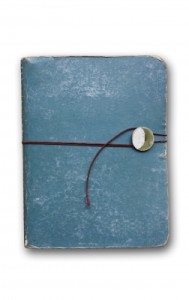Happy 2013!
After my long holiday break, I have a few thoughts about books to share — partly because of the awesome number of them gifted to me and weighing down my suitcase after the holidays.

Word goodness! Image courtesy of geekphilosopher.com
The wave of digital readers and e-books that is swirling into publishing-dom, tsunami-style, consistently creates existential ripples among traditionalists (yours truly included) and those affiliated with the traditional order, along the lines of, “What is a book?”
This isn’t one of those existential ripples.
It’s a different ripple. What’s going to happen to the community of reading as the phenomenon of book covers dwindles and vanishes?
The NY Times Travel section published an article in mid-December 2012 about literary haunts in Manhattan. The author, while visiting a “literary” bar recommended to him by friends, observes:
“Most of the women looked like extras from an episode of Lena Dunham’s HBO series, ‘Girls.’ I would report to you the books they were carrying, but the only readers in the bunch were grasping Kindles.”
The author is sad because he can’t hit on the ladies based on what they might be reading, but I’m sad because not glimpsing what they are reading takes a lot of the community out of reading!
The best way to find new books: as gifts
I’ve always thought that books make the best gifts.
I’m talking as the recipient (although I do enjoy giving them, too). I’ve gotten a lot of good ones over the years, for birthdays and Christmases, and other big life events, such as when I left for my two-year sojourn in New Zealand. It’s how I found some of my favorite books of all time: Anne of Green Gables, the original Earthsea trilogy from Ursula LeGuin, Jane Eyre, Mary Higgins Clark’s thrillers, Juliet Marillier’s Light Isles and Sevenwaters books, Sigrid Undset’s Kristin Lavransdatter books (I swear I read male authors too), German young adult mystery and fantasy novels, thick with detail and glorious language…
The tradition was kept up this year, when I received Stephen King’s On Writing, possibly one of the best books, on, er, writing, that I’ve ever seen (and also on my All-Time Favorites list. A male author. There). As well as a few other tomes.
I’ve killed my favorite books with love. The hard covers have stood up well, but the paperbacks are falling apart. I’ve lost count of how many times I’ve read them — I used to read the Earthsea books and Anne of Green Gables about once a year. If I ever wanted to offload them on the Amazon used-book marketplace, they would near-universally have to be rated as in poor condition. The corners are dog eared and frayed; the cover art cracked and barely recognizable to an unknowing eye; the bindings are pulp; the front covers are coming off and so are some of the opening pages; other pages are yellowed with age and exude an old-book smell. The only kind of used-book defacement missing is writing on the pages — I never ever wanted to scribble in my books! Even after they succumb to the ravages of love, they’re kind of sacred.
Now, I flag my books with crazy-colored sticky notes. I still can’t bring myself to create messy marginalia.
Over time, I’ve received fewer titles that I haven’t requested by title or author name in advance. Instead of books, I tend to get recommendations.
The next best way: educated guesswork
In my case, book recommendations — a form of educated guesswork by the recommender — translate into trips to the library (I’d be eating Ramen noodles every day, assuming I wasn’t buried by a collapsing pile of books in my hoarder-style apartment, had I actually purchased a copy of everything I ever wanted to read). One author or style leads to another: I quickly amassed a “to read” list that outstripped my power to ever complete.

Standing out from the crowd
image courtesy of freedigitalphotos.net
My primary strategy for adding to the list consisted of browsing the “new fiction” shelves at our local branch, looking over the spines of all the shiny new volumes — a form of less-educated guesswork (this time by me). Unless it was clear from that superficial view that the book was not my cup of tea, I’d read the dust jacket… and if that was promising, the first few lines or paragraphs of the book itself. I knew I had a winner when I got to the third page, standing in front of the shelves, and I was still reading.
We’ve all heard the saying, “don’t judge a book by its cover.” But it’s hard. I picked up Stef Penney’s The Tenderness of Wolves based solely on the title, for example. Smilla’s Sense of Snow (Peter Høeg) caught me with the eye on the cover, enigmatic, as well as the taste of winter suggested by the white background.
I agree a book cover shouldn’t be everything, but it’s a logical place to start. Especially if we don’t know the author or have never of the book.
Unsurprisingly, the modern book marketing machine revolves around the cover. The cover is the cornerstone of the book’s “branding.” This holds true even when the visual is virtual: online book stores use cover images as icons to flag books for would-be purchasers, and author websites feature an image of the book for sale.
But there really isn’t any cover on an e-book.
After we’ve purchased the digital copy or borrowed it (depending on the current state of wrangling between libraries and publishers), it resides solely on our flickering little screen. Once we start reading, the cover, visible only to us in the first place, effectively vanishes.
And the reading community goes with it.
Because books aren’t only just for us to read

the gift of a story
image courtesy of freedigitialphotos.net
Sure, we think we’re engaged in a solitary activity when we’re reading… it’s hard to have a conversation with someone else at the same time and actually remember a word of what we read… but although I’m not a betting woman, I’m willing to bet cold hard cash that I’m not the only one who’s relied on the recommendations and book suggestions of family, friends, and strangers. And let’s not forget the literary community at Goodreads, more than 13 million users strong. It’s a community built up explicitly around books! And interestingly, the fulcrum of this social media hub, digital and virtual though it is, involves seeing what other people have on their “shelves” (welcome back, cover icons) …and what their comments on these books are.
We lose the human connection when there is no way to tell what someone is reading — or to show anyone else what we are reading. Users of electronic devices could just as well be checking their email, or surfing Facebook, as reading any kind of book.
In an example of classic book interaction, the lady next to me on the plane last month struck up a conversation about the book that I was reading — because she had just caught a glimpse of its cover. Not to browbeat the Kindle, but this conversation would surely not have taken place if I had been holding a computerized version of the book. I then saw she was holding a book of crossword puzzles, and so we went from food (my book was Consider the Fork) to writing to families — one of my grandmothers was a prodigious crossworder in her day.
There we were, two strangers, discovering a common bond by virtue of our book [covers]. As I said, the cover is a good place to start. Not just for marketers, but for the rest of us, too.
…
Have you stumbled across any good new books recently? How did you find them?
How likely are you to ask somebody reading a Kindle or a tablet whether it’s “any good?”

Very well written!! I couldn’t agree more!! These electronic advancements are hindering true and potential interactions with people. Although convenient, electronic reading devices just give us another way to hide and be anonymous….
I think you’ve got something there with the desire to hide & be anonymous…